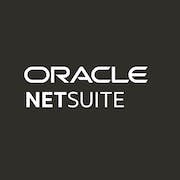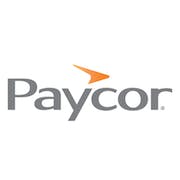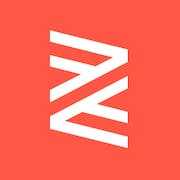Looking for a comprehensive onboarding software buyer's guide? Our expertly crafted guide offers everything you need to know to make an informed purchase decision and streamline your employee onboarding process. Click here to learn more!
Onboarding new employees can be a daunting task. From paperwork to training, HR professionals have a lot on their plates when it comes to welcoming new team members. Enter onboarding software. This game-changing technology has the power to streamline the entire process, saving businesses time and money while ensuring a seamless experience for new hires.
But with so many options on the market, it can be overwhelming for companies to choose the right solution for their needs. This comprehensive guide is here to help you navigate the world of onboarding software and make an informed decision that will benefit your business for years to come. Let's dive in.
What is onboarding software?
Onboarding software is an automated platform that helps companies manage the onboarding process for new hires. It is designed to streamline the procedure by centralizing information, creating a clear workflow, and monitoring progress.
With an onboarding solution in place, companies can digitize HR paperwork, simplify the orientation process, and track employee progress through a customized workflow. Moreover, an effective onboarding program has the potential to significantly improve employee satisfaction and retention rates by up to 82%!Common use cases of onboarding software include:
- Automated HR paperwork: Businesses can use the software to create and manage important HR forms and documents, such as W-4 forms, employee handbooks, and confidentiality agreements.
- Improved orientation process: Keep employees engaged by providing a streamlined onboarding experience and reducing the administrative burden placed on HR. Orientation sessions can be conducted using video, quizzes, or interactive learning modules.
- Tracked employee progress: Employers can track the progress of new hires, ensure they have completed all necessary tasks, and provide feedback along the way.
- Enhanced corporate culture: Onboarding tools can help to promote brand identity and company culture by providing new hires with interactive content and information about the company history, values and mission statement.
Onboarding is a critical process for new employees, and having the right software can make all the difference. According to Gartner, over 82% of organizations have some kind of formal onboarding program in place. Companies that effectively utilize onboarding tools come from a variety of sizes, ranging from small businesses to major industry leaders, for example:
- Fast-growing startups
- Large enterprises with remote workers
- Organizations with a high volume of new hires
- Companies looking to improve their retention rates
- Businesses seeking to improve employee engagement and satisfaction
Regardless of the type of company or industry, adopting onboarding software can lead to a smoother hiring process and ultimately a more satisfied workforce.
What are the benefits of onboarding software?
As highlighted above, onboarding software is a crucial tool for businesses of all sizes, and proper onboarding is necessary for all new hires – simply getting an employee to sign on to your company does not make them magically productive! Below are what we think the key benefits you can expect from an onboarding solution.
Enhanced productivity
Onboarding software helps new employees to understand their roles better, become familiar with company culture, and quickly get up to speed with the expectations and processes of their new job. This promotes productivity from day one.
Better employee engagement
A well-planned onboarding procedure helps to increase engagement with new hires by providing them with the tools and resources they need to become successful in their role.
Reduced time to productivity
Thanks to structured training and development resources, onboarding tools create a fast-track process for new hires to gain the knowledge and skills required to be effective in their roles.
Consistency
An onboarding software aids in ensuring that all new hires receive the same level of training and coaching. This consistency ensures that every employee is able to perform at the same level, regardless of background or experience.
Lower turnover rates
Onboarding through software can lead to better employee retention by creating a better understanding of the company's values, culture, and expectations. This can lead to increased job satisfaction and a more committed workforce in the long term.
Overall, an onboarding software is a vital tool for businesses that want to attract and retain top talent and, at the same time, ensure that new employees are able to contribute to the organization in the shortest amount of time possible.
10 key features of onboarding software
Are you ready to unlock the power of an onboarding solution? Thanks to these 10 game-changing features, you can say goodbye to wasted time and money, and hello to a seamless and comprehensive hiring experience for your new employees!
- Digital document signing: Onboarding software allows for the uploading and signing of important documents, streamlining the process for both employees and employers.
- Customizable forms and workflows: The ability to create and customize forms and workflows helps companies to tailor their onboarding process to their specific needs.
- Mobile optimization: Let your new employees complete necessary forms and tasks from any device, anytime, anywhere!
- Employee task management: Task management features help employers keep track of new employee progress and ensure that tasks are being completed efficiently.
- Compliance management: With an onboarding solution in place, it's easy to ensure that all compliance requirements are met during the hiring process.
- Personalized portals: Employees can access all necessary onboarding materials in one easy-to-use location.
- Reporting and analytics: With reporting and analytics, employers can track onboarding progress and identify areas for improvement.
- Integrations: Many onboarding software options integrate with other HR systems, increasing efficiency and reducing errors.
- Communication tools: Communication tools, such as messaging or chat, allow for easy communication between new employees and HR staff.
- Benefits enrolment: Some onboarding software tools allow for new employees to enroll in company benefits during the hiring process, simplifying it significantly for both parties.
Onboarding software: What to consider?
With so many options available in the market, choosing the right onboarding solution for your business can be difficult! Let's go over some important factors to consider when making your purchase.
- Make sure to assess the features that the onboarding software offers. Some common features include task management, document management, and employee self-service. Consider what features would be most helpful for your specific business needs.
- The onboarding solution should be easy to use and navigate for both the employer and the new hire. Look for one that has a clean and user-friendly interface and that doesn't require extensive training.
- Does the onboarding tool integrate with your existing HR software or other systems? Having seamless integration can help ensure a smoother onboarding process.
- Your organization has its unique needs, and you'll want a solution that can be customized to fit them. Choose a program that allows for tailored workflows, branding, and any other customizations that will make the process more streamlined and aligned with your business goals.
- The onboarding process involves sensitive employee information, so ensuring that the software has robust security measures in place is crucial. It should include data encryption, secure storage, and authentication protocols.
- Like any software, issues and questions may arise, so having access to technical support is important. Look for a vendor that offers strong technical support, including training options, online documentation, and responsive customer service.
By considering these factors, you can make a good decision on which onboarding software is the best fit for your business. With the right tool in place, your hiring process can become more streamlined, efficient, and enjoyable for both new employees and employers.
Software trends for onboarding solutions – what to expect in near future?
Here are some of the biggest onboarding software trends in 2024 and beyond:
Mobile-first onboarding
With increasingly mobile workforces, mobile-first onboarding solutions will become more popular. This means that onboarding software will be designed specifically for mobile devices, with user interfaces optimized for smaller screens and touch-based interactions.
Artificial intelligence (AI)
AI-powered onboarding software will become more common, with algorithms that can personalize onboarding content and enhance user experience based on employee data and preferences. This will make the onboarding experience more engaging and interactive, leading to better retention rates and job satisfaction.
Video-based onboarding
Video is becoming an increasingly popular medium for onboarding, as it allows companies to personalize their messages and deliver them in a more engaging way. Video-based onboarding solutions will become more common, with personalized videos that welcome new employees and provide them with vital information.
Gamification
Gamification is the process of using game mechanics to make non-game activities more engaging. Onboarding solutions will begin to incorporate gamification elements, such as leaderboards, challenges, and rewards, to make the onboarding experience more fun and engaging.
Virtual reality (VR)
VR technology is becoming more common in the workplace, and onboarding is no exception. VR-based onboarding solutions will become more popular, allowing new employees to explore their new workplace, learn about their role, and interact with colleagues in a virtual environment.
By adopting these trends, companies can make the onboarding process more engaging, efficient, and effective. This will not only improve employee retention rates and job satisfaction, but can also lead to better overall business outcomes, such as increased productivity and profitability.
Conclusion
Onboarding new employees can be a complex and time-consuming process. However, using the appropriate software can help companies streamline the process, making it more efficient and effective. A seamless onboarding experience can enable new employees to quickly adapt to their roles and reach their full potential. Regardless of the company or industry, adopting onboarding software can simplify the process and contribute to employee satisfaction from day one.








